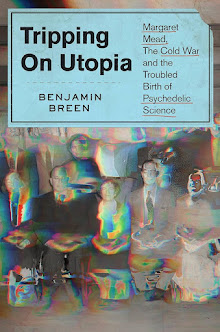Prince Giolo, Son of ye King of Moangis or Gilolo: lying under the Equator in the Long[itude] of 152 Deg[rees] 30 Min[utes], a fruitful Island abounding with rich spices and other valuable Commodities. This famous Painted Prince is the just Wonder of ye Age. His whole Body (except Face, Hands and Feet) is curiously and most exquisitely Painted or Stained full of Variety and Invention with prodigious Art and Skill perform'd. In so much of the ancient and noble Mistery of Painting or Staining upon Human Bodies seems to be comprised in this one stately Piece. The more admirable Back-parts afford us a Representation of one quarter part of the Sphere upon & betwixt his shoulders where ye Arctick & Tropick Circles center in ye North Pole of his Neck... The Paint itself is so durable, which nothing can wash it off or deface ye beauty of it. It is prepared from ye Juice of a certaine Herb or Plant, peculiar to that Country, w[h]ich they esteem infallible to preserve Human Bodies from ye deadly poison or hurt of any venomous Creature whatsoever, & none but those of ye Royal Family are permitted to be thus painted with it. This admirable Person is about ye Age of 30, graceful and well proportioned in all his Limbs, extreamly modest & civil, neat & cleanly; but his Language is not understood, neither can he speak English. (1697)
In 1691, the buccaneer and naturalist William Dampier returned to England after a daunting circumnavigation of the Earth, his first of what would be three round the world journeys. When he returned to London, Dampier was accompanied by a slave from the island of Miangas he had acquired in the course of this journey -- a man he called 'Prince Giolo.'
As Dampier recollected in his published account of his travels , "[Giolo] was painted all down the breast, between his shoulders behind; on his thighs before; and in the form of several broad rings, or bracelets, round his arms and legs. I cannot liken the drawings to any figure of animals, or the like, but they were very curious, full of great variety of lines, flourishes, checkered work, etc. keeping a very graceful proportion, and appearing very artificial, even to wonder, especially that upon and between his shoulder blades... He told me that most of the men and women of the island were thus painted." (William Dampier, A New Voyage Round The World, 1697)
, "[Giolo] was painted all down the breast, between his shoulders behind; on his thighs before; and in the form of several broad rings, or bracelets, round his arms and legs. I cannot liken the drawings to any figure of animals, or the like, but they were very curious, full of great variety of lines, flourishes, checkered work, etc. keeping a very graceful proportion, and appearing very artificial, even to wonder, especially that upon and between his shoulder blades... He told me that most of the men and women of the island were thus painted." (William Dampier, A New Voyage Round The World, 1697)
Dampier was blunt about his reasons for taking Giolo back to London: "I proposed no small advantage to myself from my painted prince... [that] might be gained by shewing him in England" (Voyage, 347). A manuscript by Dampier curently housed in the British Library is even more blunt: "I only brought with me this Journall & my painted prince which I might haue made a great deal of money by but I lep out of the frying pan into the fire in leaueing gouernour Senden to come home with Captain heath." For more on this see Geraldine Barnes, "Curiosity, Wonder and William Dampier's Painted Prince," in the Journal for Early Modern Studies. Giolo is also discussed in a recent book on Dampier called A Pirate of Exquisite Mind. I hope to consult Dampier's manuscripts when I do research in London this July, so perhaps I'll be able to write about Giolo in much more detail in a month or two.
At the moment, the best account of Dampier and Giolo that is freely available online seems to be this blog entry. Although usually mentioned as an interesting anecdote, Giolo's story was quite tragic. Exhibited for money in London, Giolo was later taken to the University of Oxford to be examined, where he died from smallpox. Apparently, samples of Giolo's tattooed flesh were preserved in the library of St. Johns College, Oxford under the macabre entry, "a bit of an Indian prince's skin," but they appear not to have survived.
Pintados, 'the Painted Ones,' in an early Spanish record of the Philippines, the Boxer Codex, c. 1595.






5 comments:
Hey if you get a chance check out ADD MS 5253 f. 38 in the BL - it seems to be either an early version or a copy with the background removed of the picture of Giolo - its marked 'A Prince from the Island Gilolo in the East Indies'.
Very interesting -- thank you!
He is a Visayan, the spaniards called the Visayans pintados, because their bodies were covered with tattoos.
Miangas is very far from the Visayas group of Islands actually, being south of Mindanao. Interestingly, it was eventually later acknowledged as under Dutch Sovereignty rather than Spain and thus not included in the treaty of Paris....and is now part of Indonesia.
can anyone tell me more about him?? please, like where is the island he was born? tattoo meaning,
thank you
Romar Garcia
romar244@hotmail.com
Post a Comment